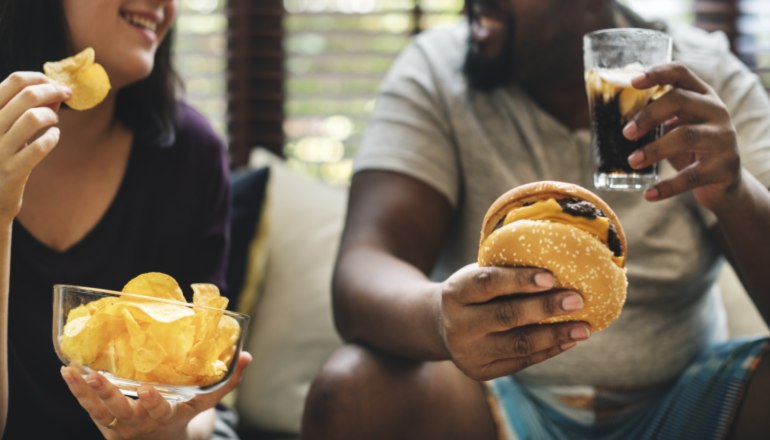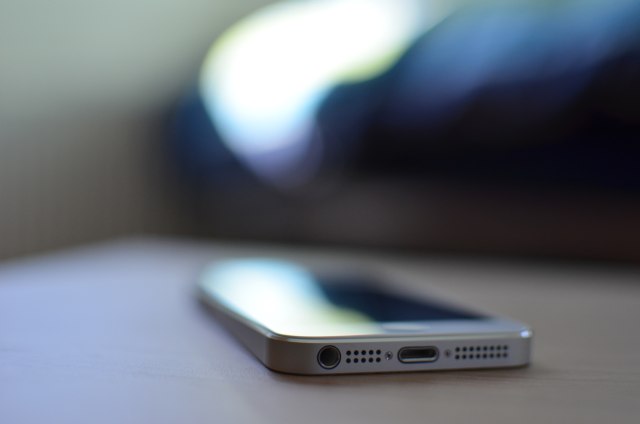 Reading Time: 8 minutes
Reading Time: 8 minutesIf you’re anything like me, you have a few bad habits you’d love to get rid of. And, like me, you’ve probably tried breaking those bad habits only to realize how tough the process can be.
As a coach I’ve helped hundreds of people change their habits — covering everything from health, fitness, and eating habits to work, financial, and relationship habits. But regardless of the specific habit, I’m often asked the same, frustrated question:
“Why can’t I just stop my bad habit?”
If only we could “just stop” our bad habits, our lives would be much easier, right?
Unfortunately, “just stopping” is rarely a successful strategy for behavioral change, particularly when it comes to bad habits.
So, if we can’t simply quit our bad habits, how do we change them?
The good news is, the science of habit formation and behavioral change has come a long way in recent years. We now have greater insight into how our brains work — and how to use that data to overcome unhelpful habits.
Let’s start by exploring habits a little further.
The Neuroscience of Habits (and Breaking Habits)
Think back to how you started your day. Perhaps you woke and turned off the alarm, checked your smartphone, made your bed, drank a glass of water, brushed your teeth, got dressed, tied your shoelaces, went for a run, had a shower, put on work clothes, made your lunch, grabbed your keys, drove to work, bought a coffee, greeted your coworkers, sat at your desk, and turned on your computer.

In those few hours, it’s likely you performed dozens of activities with little conscious thought or effort. Those activities are habits. By repeating them daily over an extended period of time, they’ve become ingrained to the point where you don’t need to think about them. You just do them.
For the most part, these automatic habits are helpful. Our days would feel onerous if we had to consciously think about each action we performed. Instead, habits are created and executed like a background “program” in our brains, so we can conserve energy for other, more challenging tasks.
Now, this is all well and good for the helpful habits. But the brain doesn’t differentiate between good and bad habits. All habits — good and bad — are stored deep in the brain as embedded programs, ready to execute on cue.
Each of those programs has three components — a trigger, a behavior, and a reward. As a practical example from above, let’s say I’m in the habit of checking my smartphone immediately after waking in the morning:
- The trigger is waking up.
- The behavior is checking my smartphone.
- The reward is a little hit of dopamine (a feel-good brain chemical) that’s released as my email pings and social media notifications light up.
All habits have this same structure, whether they’re typically helpful habits (like drinking water, meditating before bed, or going to the gym) or less helpful habits (like buying chocolate at the supermarket check-out, watching television until midnight, or eating dinner while scrolling through social media). In each case, there’s a trigger that prompts us to perform the behavior, and there’s some kind of payoff at the end.

Once we’re in this loop, we’ll continue to repeat the process until that habit becomes ingrained. And, the longer the habit is repeated, the more deeply it’s embedded. This is great news for the good habits because it means with practice, repetition, and time, we’ll no longer need to think about doing them.
However, it also explains the difficulty many of us feel when trying to break a bad habit. We’re trying to undo weeks, months, or years of a behavior that’s embedded as an automatic program. We may know on a conscious level that a habit is no longer serving us but releasing its grip can feel tough.
So, what can we do? We need to reprogram our brains to break the habit loop.
Successfully Breaking Habits = Disrupting the Loop
There are many opinions on how to break a bad habit, but I’ll stick to the seven-step process I know works (and that is backed by science).
Step 1: Become Aware
The first step in any habit change is to become aware of the behavior and, importantly, the trigger. Since we perform habits automatically, it may take time to pinpoint the trigger. So, next time you notice your bad habit, slow down and work backward — ask yourself what triggered you? Continuing my smartphone example above, we can see my trigger is waking up and the behavior is checking my phone.

Step 2: Choose to Change
Once we’re aware of a habit, we then need to make the choice to change. This step is crucial because if we’re not willing to change the habit and take responsibility for altering our behavior, then attempts to break the habit will falter. At this point, it can be helpful to reflect on our reasons for wanting to break the habit. This will reinforce our desire to change.
Here are a few questions you can ask yourself to get you started:
- Why is the bad habit unhelpful?
- What will happen if I don’t change?
- What are the benefits of changing?
Step 3: Change the Environment
The simplest way to break a habit is to not be exposed to the trigger. For example, if we only eat chocolate while watching television at home, and we donate our television so it’s no longer in the house, that’s a valid (but perhaps extreme) way to remove the trigger and break the habit.
For most habits, we can’t eliminate the trigger — but we can reduce our exposure to it by changing our environment. In my smartphone example, the trigger is waking up. I can’t eliminate that, but I can make sure my phone is not within easy reach when I do wake up. I could move it to another room, leave it downstairs, or keep it in the car. Those additional steps make it harder to perform the unwanted behavior.
Step 4: Replace the Behavior
Habits form because they deliver a reward. Most times, that reward is feeling good (thanks to dopamine). When we’re hungry, we eat, then we feel good. When we go to the gym, we exercise, then we feel good. When we’re stressed, we meditate, then we feel good. In other words, we’re wired to seek out things that make us feel good, and habits are no different.
This step is where many people fail because they believe they should “just stop” the bad habit. Unfortunately, our inbuilt drive to feel good overrides our willpower when we’re exposed to the trigger. We still seek the reward our bad habit gives us. That’s why replacing the behavior with one that delivers a similar reward is so important.
Put another way, the trigger remains the same, the feel-good reward is still there, but the intervening behavior needs to change.
In my smartphone example, I could swap checking my phone with a more helpful activity such as stretching. My trigger (waking up) stays the same, my reward (feeling good) is still there, but I’m now stretching instead of checking my phone.

Step 5: Get Support
When making behavioral change, it’s important to be supported in your endeavors. Change can feel hard, so having a network to support that change (and hold you accountable) can be the difference between success and failure.
It may be as simple as telling a friend, colleague, or family member that you’re changing a bad habit. Or, it may mean surrounding yourself with others who have values and beliefs similar to yours (like a gym, club, team, or professional organization). In my smartphone example, I could tell a friend about my change and ask that she check how I’m doing each time she sees me over the coming weeks.
Step 6: Monitor and Track
In habit formation, there’s a concept called “don’t break the chain” that helps reinforce new behaviors. Basically, by tracking new behaviors in a visible way, it means we’re less likely to “break the chain” and fall back into bad habits. For example, ticking each day in your calendar when you perform a new habit is a simple way to visualize your progress and provide impetus to keep going (this should sound a lot like the Whole Life Challenge “rainbow chart” to those of you who play our game).
Depending on the behavior you’re changing, a simple calendar could work, or a habit tracker, an accountability app, or a results log. The tracking doesn’t need to happen forever (we suggest tracking for six weeks and then taking a break). The tracking is simply a tool to help reinforce the new behavior until it becomes an automatic habit.
Step 7: Repeat, Repeat, Repeat
The saying “old habits die hard” is true — it may have taken months or years to develop your bad habit. Your new, more helpful habit will take just as much repetition and practice to become fully embedded.
And continued awareness is important as the old habit will always be there, stored deep in your brain as an automatic program. The key is to practice the new behavior consistently and persistently until it becomes a stronger neural pathway in your brain, overlaying the previous, old habit. In my smartphone example, I need to practice my new behavior (stretching) until it becomes the normal response to my trigger (waking up).
Make Your Habits Work for You
All this talk of breaking habits brings me to my final point — if you’re reading this, it’s likely you’re interested in the Whole Life Challenge, you’ve completed a Challenge before, or you’re currently participating in one.
The great news is the scientific principles of behavioral change are already built into the Challenge’s structure. It’s no accident you’re exposed to the concepts of awareness, reflection, support, accountability, monitoring, tracking, and practice (practice, practice), during your Challenge experience. Those mechanisms help alter your unwanted behaviors, change your habits sustainably, and free up your energy to live a life that feels good without the negative consequences of bad habits.
As you go through the process of habit change, remember that relapses are normal. The key is to treat yourself with compassion and get back on track, knowing that each time you repeat your new behavior, you get a little closer to automaticity.
I’ll leave you with one of my favorite quotations about habits: “We are what we repeatedly do. Excellence, then, is not an act, but a habit.” — Aristotle.













